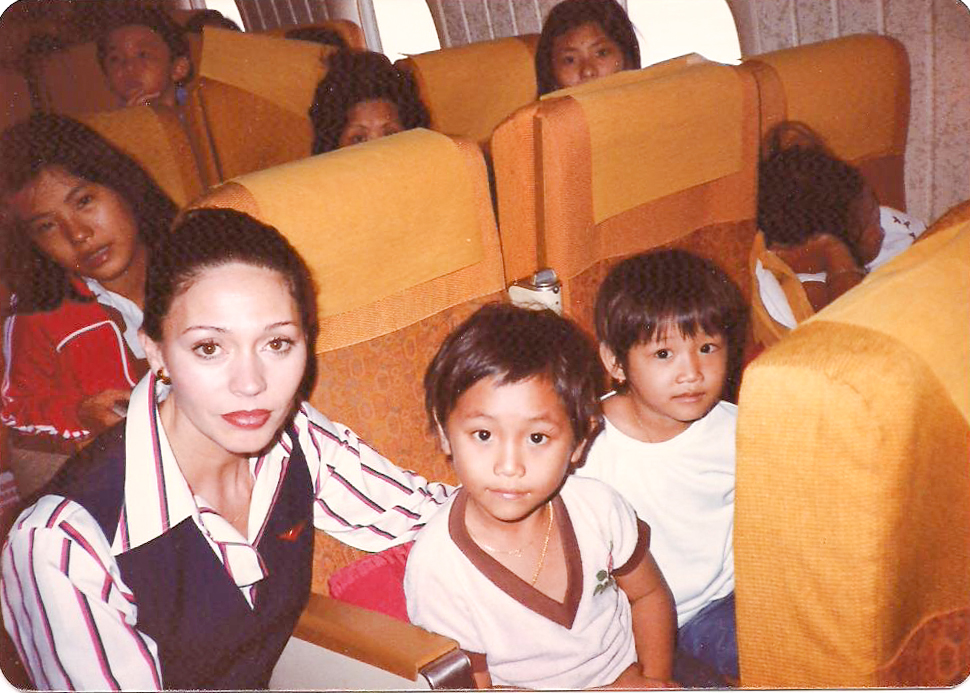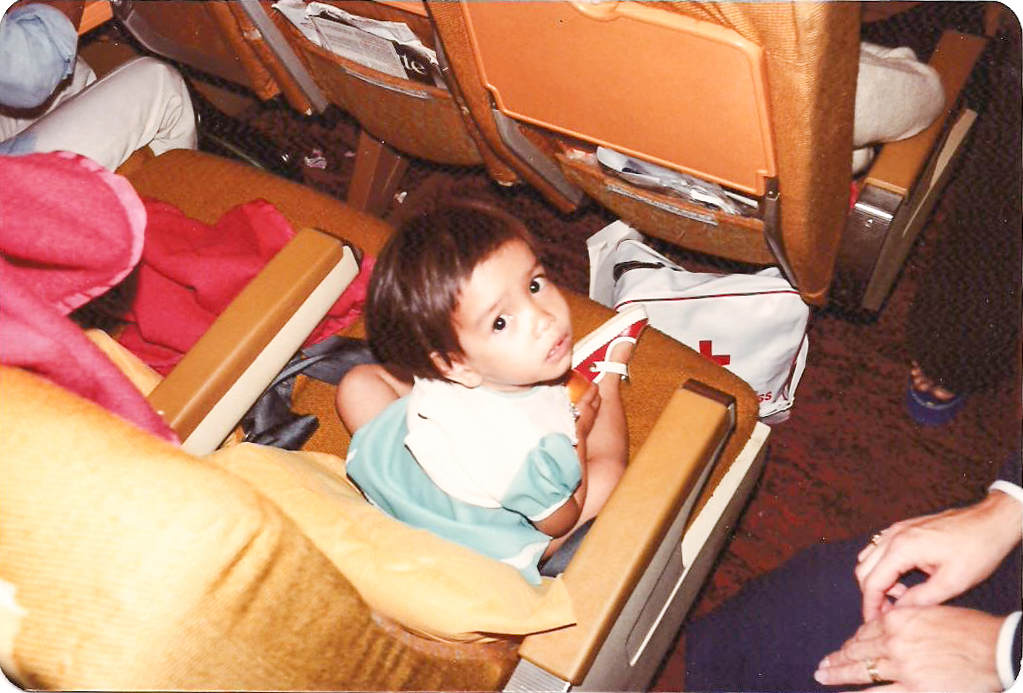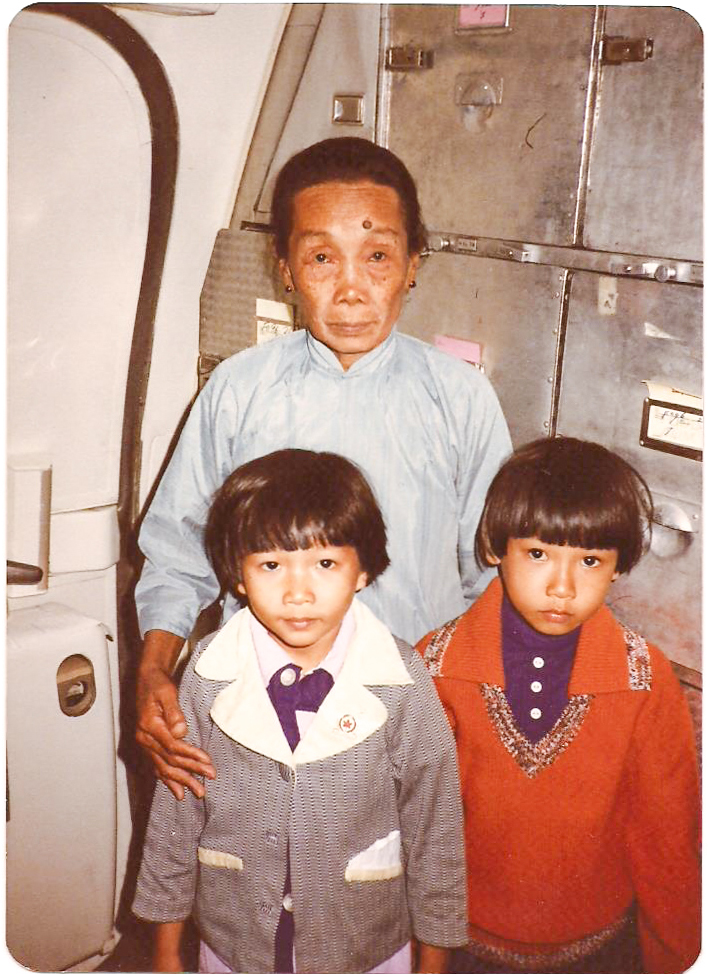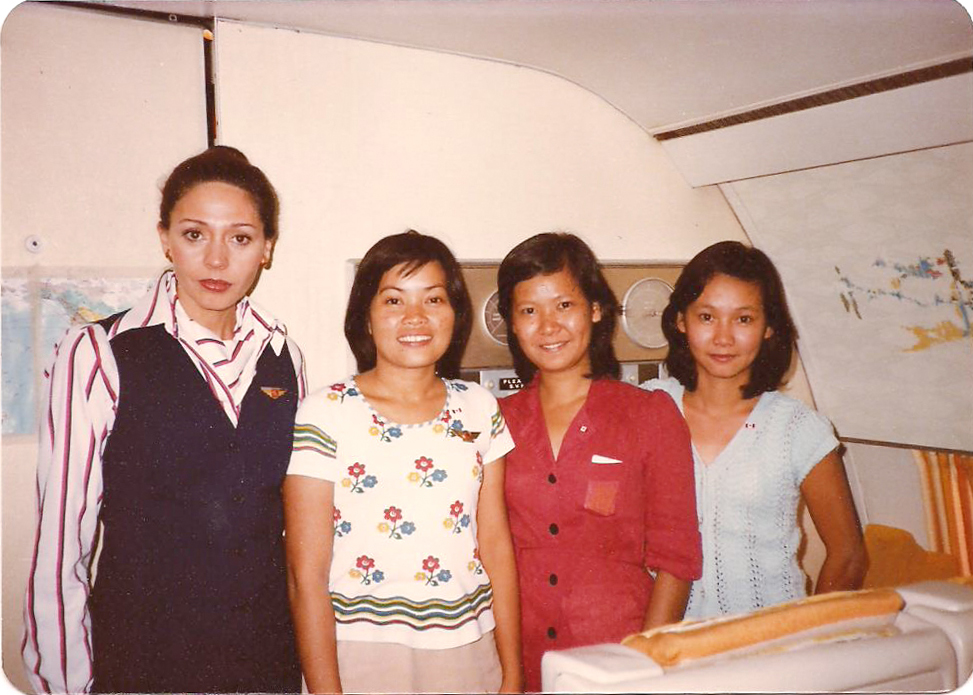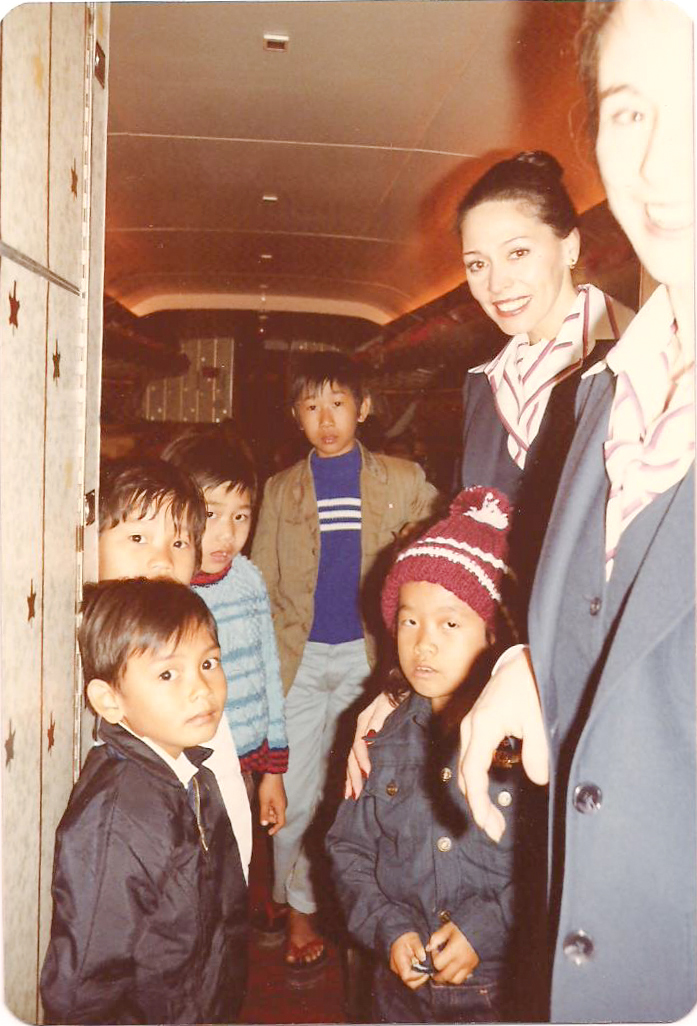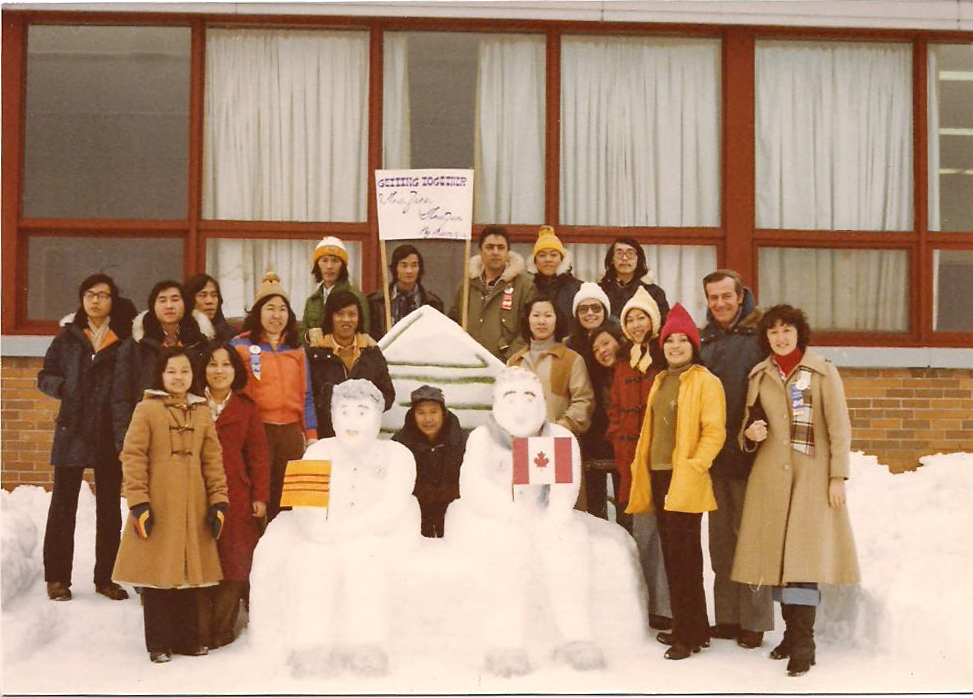Air Canada Vancouver-based crews were assigned to airlift Vietnamese refugees from various points in South-East Asia to major Canadian cities in 1979-1980. This refugee resettlement program would become one of Canada’s largest and most ambitious, bringing over 50,000 Vietnamese ‘boat people’ to our shores and throughout the country.
Welcome To Canada (A New Beginning)
From the relative comfort of our air conditioned aircraft I gazed at our passengers on the tarmac. Some were still on the buses while others stood without shelter under the blazing sun. I was soon to have my first encounter with some of the Vietnamese survivors who would become known as the “Boat People.”
The place was Singapore, which is located one degree north of the equator. The heat was stifling. The average year round humidity level is about 81% with an average temperature of 32°C. - The operative word being “average”. I think we were experiencing one of the high-end days. I wondered if anyone could ever become accustomed to this extreme heat.
The convoy of buses had arrived long before departure but the passengers had to wait for the scheduled boarding time and beyond, due to formalities and document verification we were told. When boarding finally got underway, it was very orderly despite the many children and the obvious discomfort they endured over the previous hours. I rather doubt that the buses were air conditioned.
It is said that “The eyes are the window to the soul.” I detected such mixed emotions in the eyes of the adults and older children as they presented their boarding passes to us. I sensed some apprehension. They were embarking on yet another leg of their journey that would take them to a vastly different land, with a different culture, and in most cases, a foreign language, not to mention a staggering climate change. They were no doubt anxious about how they would be received by Canadians and more immediately by the crew. I believe I also detected some degree of relief. Perhaps they sensed that no matter what the future would offer, the worst was over. But, without a doubt the emotion that was most prevalent in those eyes that peered out from small thin faces was that of painful, haunting memories. As we soon learned, not only had they endured atrocities in their homeland but more acts of violence and unspeakable brutality awaited them at the hands of Thai pirates as they crossed the seas.
We also learned that minimal food was available during the crossing and for the most part the children were given what was available and the adults ate only enough to sustain life.
Although some of our passengers spoke some English and others spoke French, the crew members tried very hard to learn a few useful phrases in their language. I recall attempting to say something in Vietnamese that would resemble “Please fasten your seat belt.” "Are you hungry?” and “The washrooms are at the back of the aircraft.” By whatever means we employed to try to communicate, I think the crew members imparted their welcome to them.
The children were delightful and so well behaved. I remember a young girl of about seven years of age who had already been given an anglicized name. I believe her name was Elizabeth. She, along with a few other children had gathered in the forward galley and crew members took turns pointing out objects and had them repeat the English word. I decided to teach Elizabeth to count to five, as thus far, she had not participated in the “English lesson”. I said the five numbers very slowly, simultaneously pointing to each of my five fingers. When I reached “five” and was about to start at one again, Elizabeth said “six, seven, eight, nine, ten,” in relatively good English. A lesson well learned — never assume.
As we neared Tokyo on that first flight, where we would say good bye to our passengers and another crew would take over for the next leg of their journey, we were approached by the spokesman for the group as well as a few other passengers who could communicate in either French or English. Their touching farewell reduced the crew to tears. They wanted assurances that we would thank our government for allowing them to come to Canada. Air Canada was the recipient of accolades as well, and the crew members were thanked personally for being instrumental in coming to get them.
My experience was much the same on subsequent flights over the next many months as Air Canada brought the Vietnamese Boat People to Canada from Kuala Lumpur, Bangkok, Singapore and Hong Kong.
Many crew members kept in contact with individuals and families, sometimes for many years and through many moves and life experiences. I have had a forty year friendship with a wonderful family who settled in Montreal. I am honorary godmother to their son, we have visited each other over the years and I attended the wedding of their daughter who was only two weeks old when I first met her parents on a flight from Kuala Lumpur. I cherish their friendship and consider them to be among my very best friends.
Foot note
A few years ago I had the occasion to work temporarily with a Vietnamese man. Although his immediate family members were not among those who arrived in the late ‘70s and early ‘80s, he said he did know the history of the exodus from Vietnam. I told him of my involvement at the time and I amused him by repeating the few Vietnamese phrases I had learned. When he translated my words I discovered that while I thought I was saying “would you like a meal”, I was actually advising them that the washrooms were at the back of the aircraft. I sincerely hope that this 'faux pas' was a result of forty years of eroding memory and that I had the correct phraseology at the time.
Written by Joyce Ernyes, Air Canada Flight Attendant, Vancouver, Canada. Joyce Ernyes operated several Vietnamese Boat-People Charters from 1979-1980 and captured wonderful images of children on board. Joyce continues to be close to one of the families she had on her flight, watching their children grow up and becoming a part of their lives.

